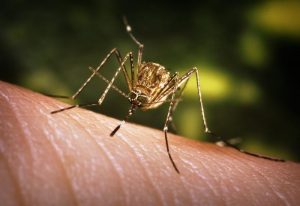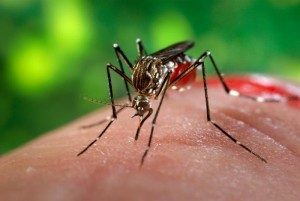By NewsDesk @infectiousdiseasenews
Miami-Dade County
Today, the Florida Department of Health in Miami-Dade County (DOH-Miami-Dade) reported a locally acquired case of West Nile virus (WNV) in a Miami-Dade resident. This is the first local case of West Nile virus in 2020.

WNV is the leading cause of mosquito-borne disease in the continental United States. It is most commonly spread to people by the bite of an infected mosquito. There are no vaccines to prevent or medications to treat WNV in people.
Most people infected with West Nile virus do not feel sick. About 1 in 5 people who are infected develop a fever and other symptoms such as headache, pain, and fatigue. People with mild illness typically recover within about a week with symptomatic treatment. Less than one-percent of infected people develop a serious, sometimes fatal, illness. Symptoms typically appear between two and 14 days after the bite of an infected mosquito. People over the age of 60 and individuals with weakened immune systems are at an increased risk for severe disease
Health officials advise the public to remain diligent in their personal mosquito protection efforts by remembering to “Drain and Cover”–DRAIN standing water to stop mosquitoes from multiplying and COVER skin with clothing or repellent.
In 2019, Florida reported two human WNV cases, one blood donor, ten horses, one eagle, and 779 sentinel chickens from 31 counties.
Gainesville

The City of Gainesville Mosquito Control reported this week the detection of the Aedes aegypti mosquito from downtown area for the first time since early 1990s.
Aedes aegypti is a vector mosquito species that can spread dengue fever, chikungunya, Zika fever, yellow fever viruses, and other disease agents.
Florida Keys: Local transmission of dengue reported
Currently City Mosquito control is not aware of any active transmission of mosquito-borne diseases such as Zika, dengue fever, or chikungunya in Gainesville, therefore there is a minimal risk for citizens to contract them. However, eliminating breeding containers around homes is very important, and it is our primary weapon in fighting the mosquito-borne disease.
It can be recognized by white markings on its legs and a marking in the form of a lyre on the upper surface of its thorax.
- Brazil COVID-19 deaths top 10,000, Health professionals guaranteed psychiatric support
- COVID-19: New triple antiviral drug combination shows early promise for treatment in phase 2 randomized trial
- Canada: The burden of Lyme disease, other tick-borne diseases in Manitoba continues to increase
- Robert Koch: Titan of Microbiology
- Afghanistan reports 6 additional polio cases in past week
- COVID-19 testing: FDA Authorizes First Diagnostic Test Using At-Home Collection of Saliva Specimens
- COVID-19 antigen test evaluated by European scientists

